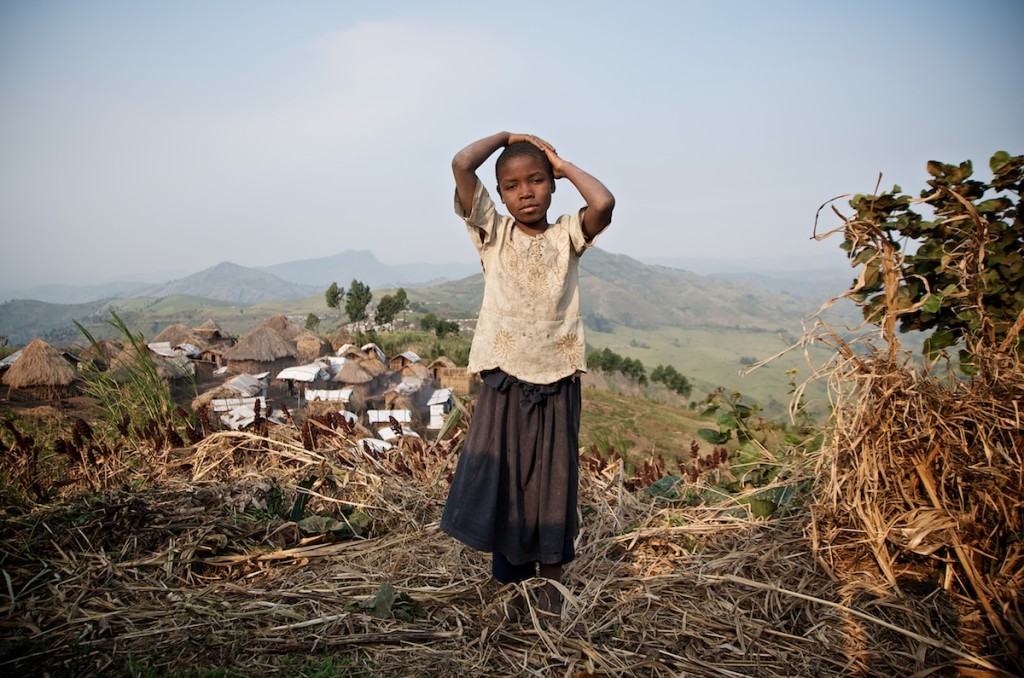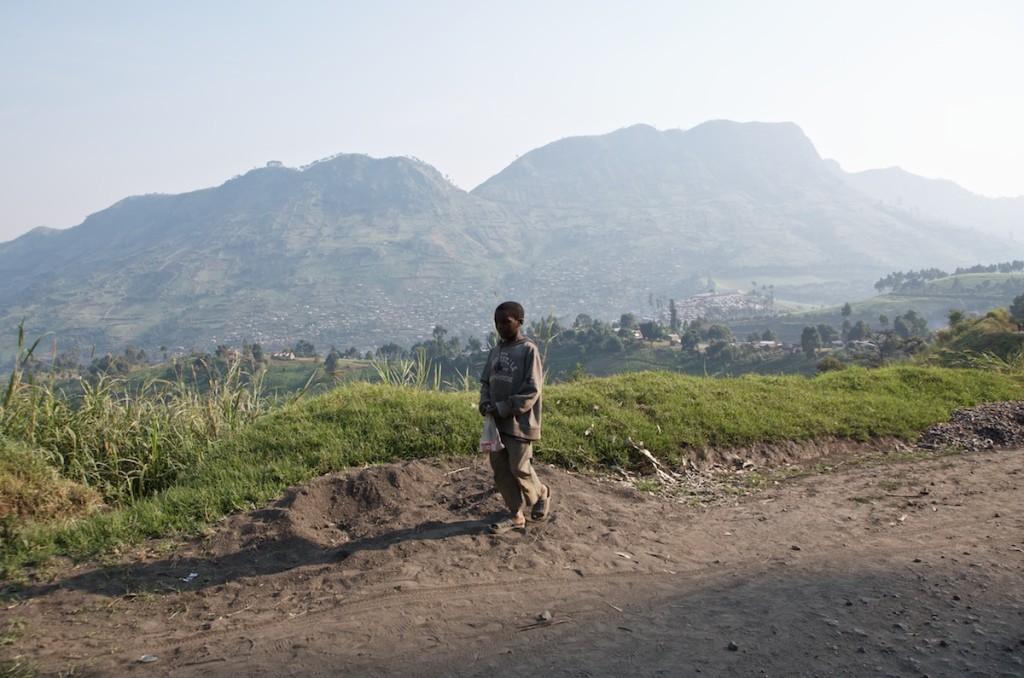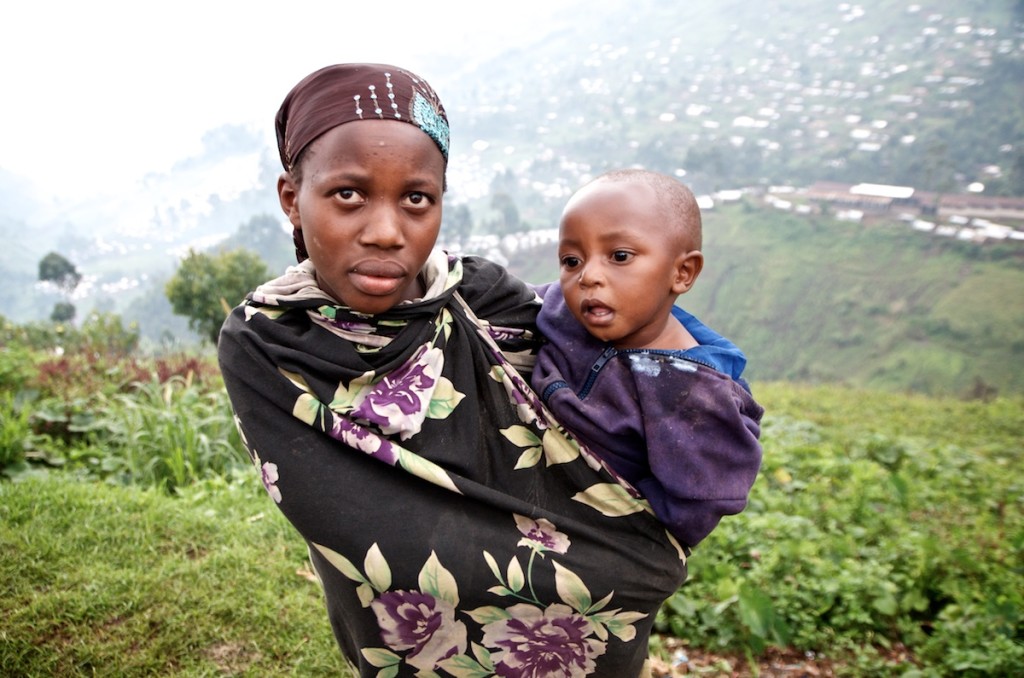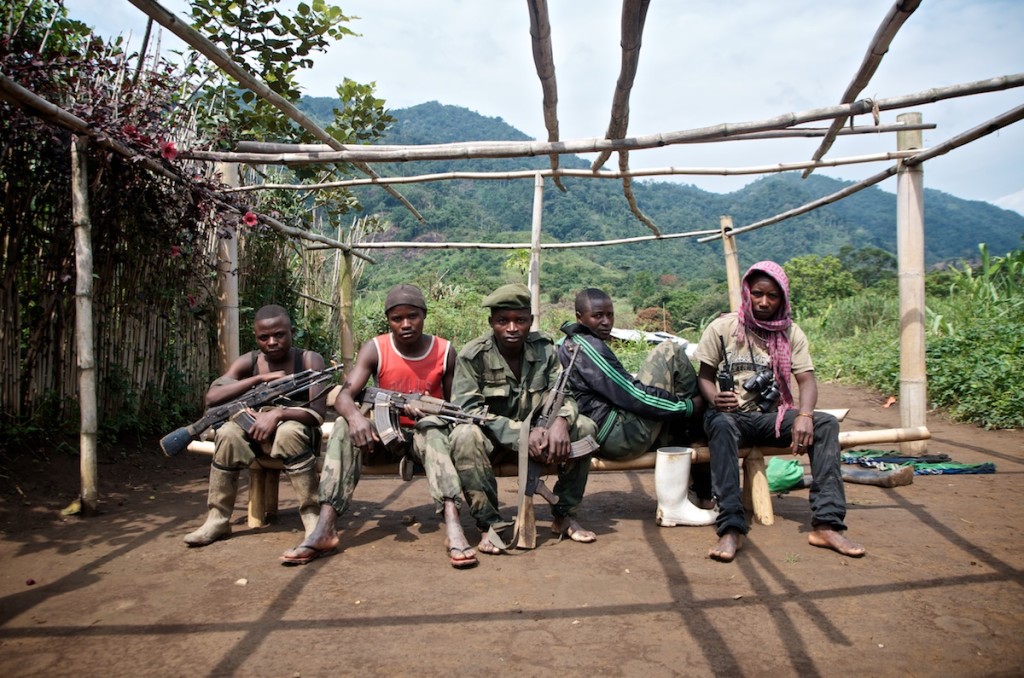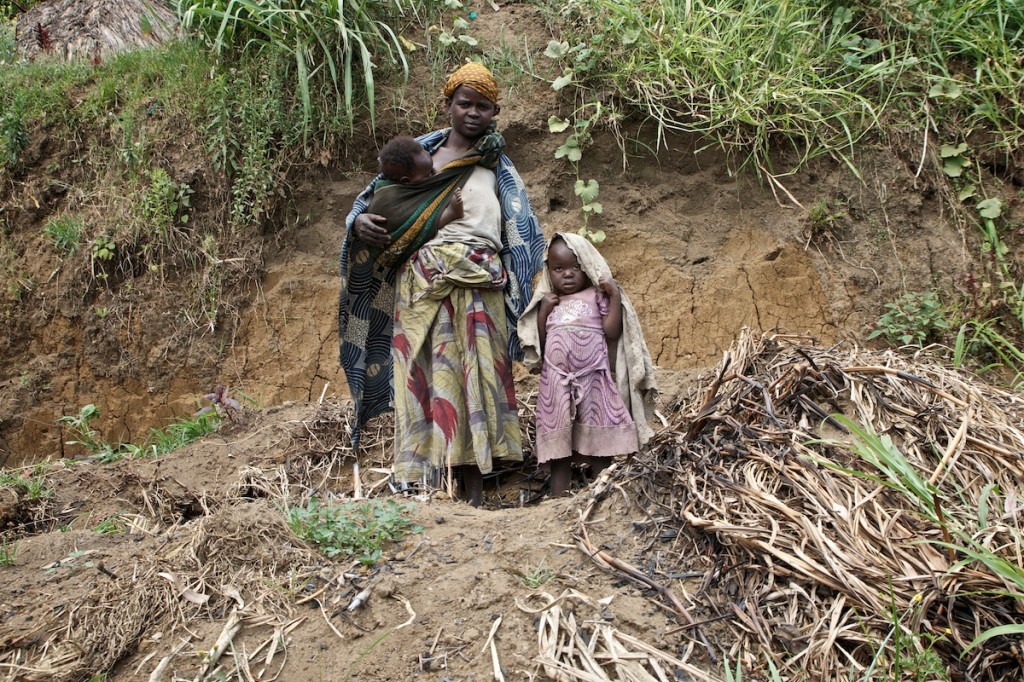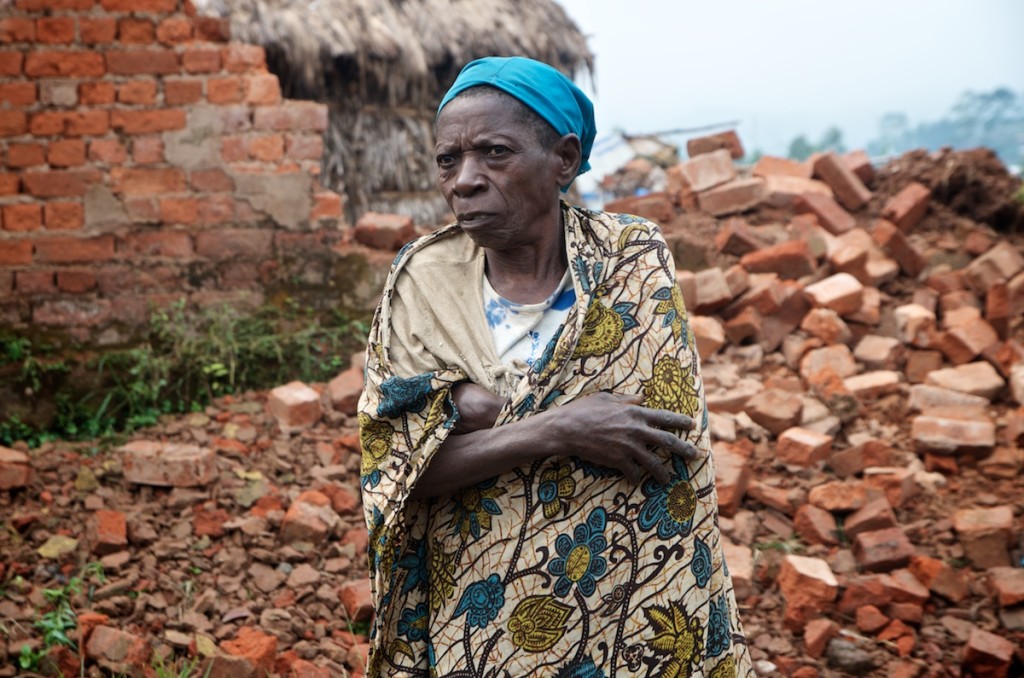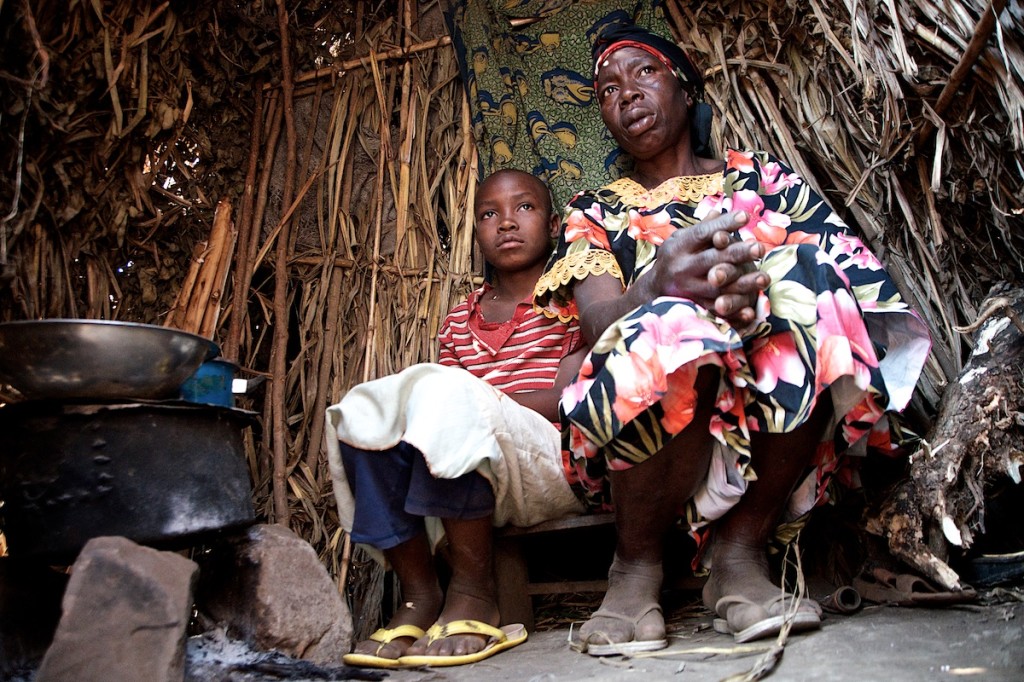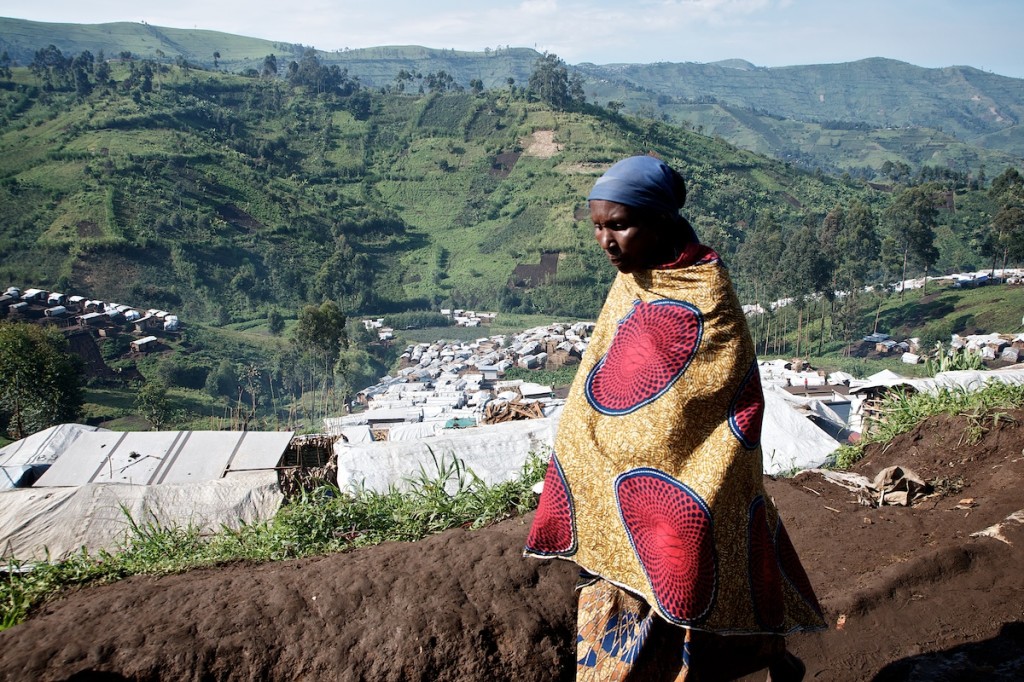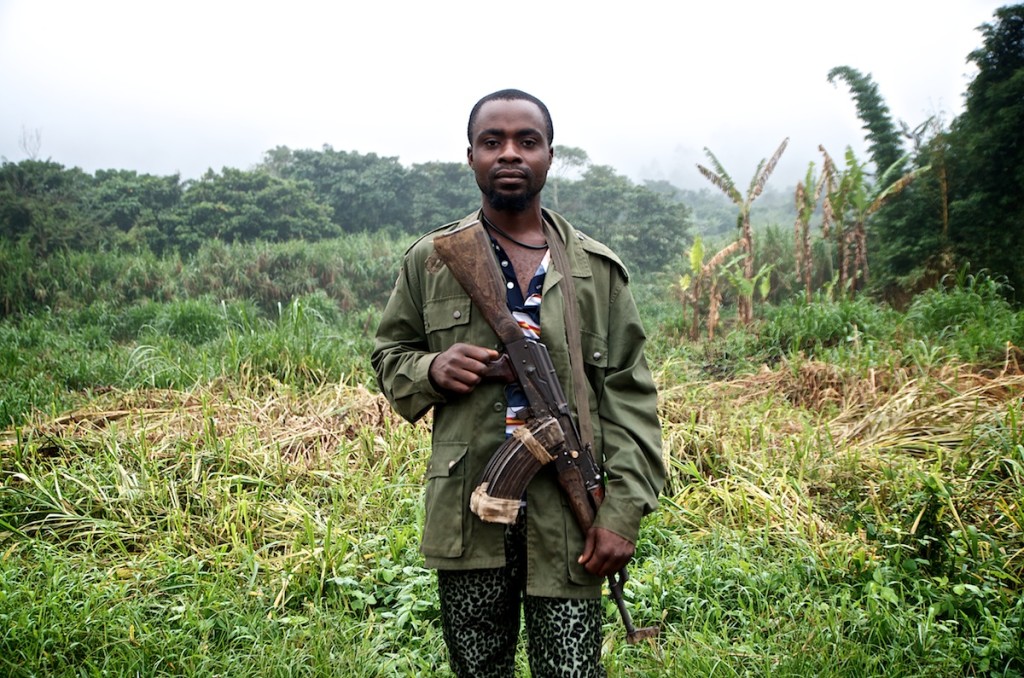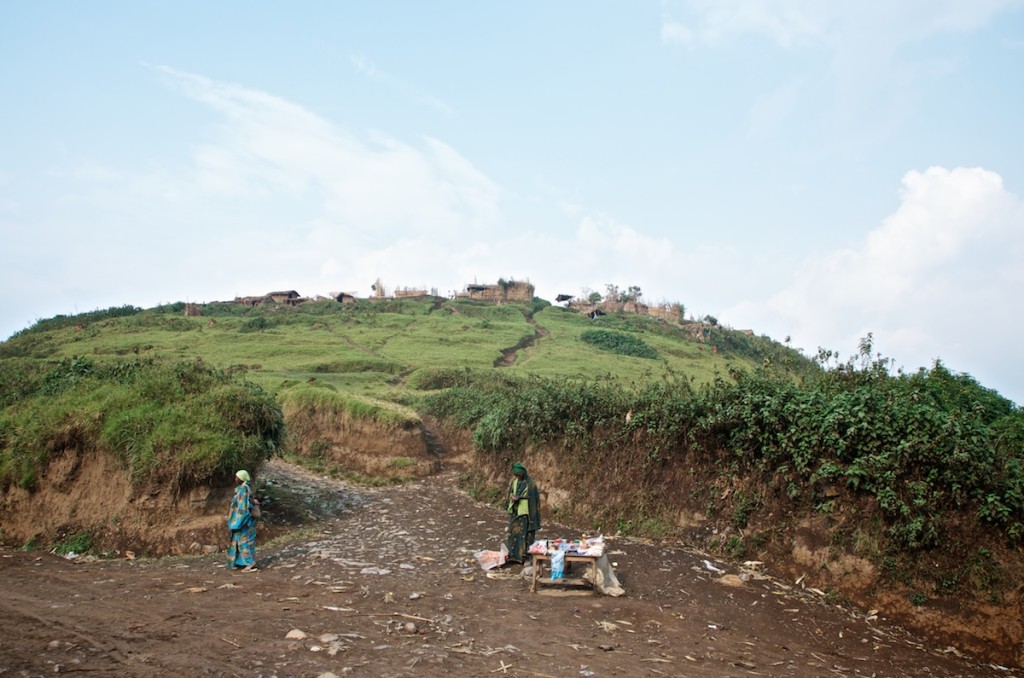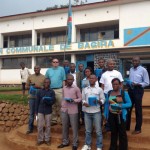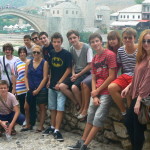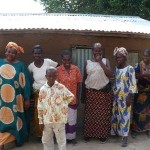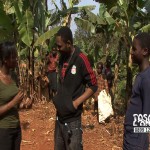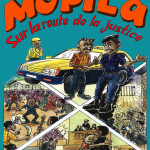Local Voices – Masisi, the Wound of Kivu
Torn apart by a 20 years bloody conflict, the eastern Democratic Republic of Congo is one of the most stricken areas of the world. In a region with colossal economic potential, many armed groups without specific goals regularly engage in fighting with dramatic consequences for the local populations. The armed conflict in the Kivus is extremely complex and made up of a mix of regional politics, anarchic exploitation of mineral wealth, ethnic rivalries, land conflicts, weakness of the state and political opportunism. A seemingly inextricable maze in which the territory of Masisi, North Kivu, occupies a central place. If the recent dismantling of M23 opens a new window of opportunity for peace, many deep-rooted challenges remain of great concerns.
Widuhaye, a ten-years-old displaced girl in front of Katale IDPs camp. Masisi territory, North Kivu, July 2013.
* * *
Warning for the readers:
Adopting the voice of the local actors does not mean that International Alert, Local Voices or Search For Common Ground legitimize or support their positions or defend their ’cause’. Instead we seek to communicate with people who live far from this reality, the fears, beliefs and wishes of local stakeholders in order to contribute to the search for sustainable solutions. To know more about the approach of the project, see here.[1]
* * *
A paradise without armed groups
“Without the armed groups, Masisi would be a real paradise!”, Joseph Sukisa, deputy administrator of the Masisi territory in charge of economy and development stated. “We have everything here! Fields, pastures, minerals! Our lands are very fertile!”
This young boy is walking with a plastic bag with cigarettes that he sells one by one in order to help his parents to pay for his school fee. In Masisi, poverty is generalized and families hardly cover basic needs such as medical care or schooling.
Despite its peaceful mountainous and green landscapes with promising potential, Masisi has been for 20 years the scene of a deadly armed conflict leading to dramatic humanitarian consequences. United Nations agencies speak of some 300,000 internally displaced persons (IDP’s) because of war in the territory of Masisi alone, out of a total of two million in North and South Kivu combined, the two provinces most affected by the war in DRC.
A young IDP girl with her brother in her arms. Behind her, down the hill, the IDPs camp of Lushebere. Masisi territory, North Kivu, September 2013.
Ten years after the signing of the Sun City peace agreement (2003), seven years after the first democratic elections (2006), which had to open a new era of peace and prosperity for the country, the east of DRC remains prisoner to a cycle of wars that never seems to end. FDLR, APCLS, Nyatura, FDDH, Mai-Mai Cheka, Guides, MAC… So many acronyms that refer to the many armed groups that continue to clash in Masisi and its surroundings.
Young members of APCLS armed group, the People’s Alliance for a Free and Sovereign Congo, in their military camp in Lukweti. They are just coming back from military operations in Pinga, Walikale territory, against elements from Cheka armed group. Lukweti, Masisi territory, August 2013.
The reasons for this violence?
They are as numerous and complex as the participating armed groups. Joseph, the deputy administrator of Masisi, gives us his point of view on the continuation of the war in his country: “If armed groups continue to exist in Masisi, this is not because of tribalism, but because of the M23 which, with the support of Rwanda, seeks to balkanize our country” he said, without appeal. “But the children of Congo are hardworking and cannot accept this balkanization. That is why they continue to create armed groups!” He adds without flinching.
This woman and her two kids stand on the remains of their home in the village of Tunda, that has been destroyed in November 2012 during fighting between armed groups. Eight months later, inhabitants from Tunda are coming back to their village in order to rebuild their homes, but still live in nearby Katale IDP camp. Tunda, Masisi territory, July 2013.
This discourse of ‘balkanization’ of Congo by external forces remains widespread in Kivu and in the territory of Masisi in particular. It finds its justification in the existence, until November 2013, of the M23, and before that of the CNDP and RCD, three successive rebel movements evolving in eastern Congo since 1998 and who have, according to many reports by the United Nations, received broad support from neighboring countries, in particular from Rwanda and Uganda. But it is also a political discourse that oversimplifies the profound and multiple causes of the armed conflicts and masks the internal responsibilities in Congo.
Mama Mirimo had to flee her village because of fightings between APCLS and Cheka groups. She took refuge in an IDP camp in Nyabiondo. One of her sons recently died from disease in the camp. Access to medical care remains problematic in the area, although several humanitarian agencies intervene in the health sector. Nyabiondo, Masisi territory, North Kivu, August 2013.
For this reason, a leader of the Tutsi community based in Goma condemns in strong terms a discourse that he considers manipulative: “Pointing the finger at Rwanda is a way to distract the people!” he tells us. “The discourse of balkanization serves the interests of the politicians in power. It allows them to divert the attention from the real issues, namely the lack of good governance and the incompetence of the authorities.”
Sixty kilometers north from Goma, in Masisi, Hutu women displaced by war will tell us exactly the same: “What brings armed groups here? It is the weakness and the incompetence of the government! It’s our MP’s themselves who stir up our youths, who organize them and distribute weapons among them! It’s the people in power who create these armed groups!” the women exclaim, disgusted by what the candidates for whom they voted for in the last elections in November 2011 are doing.
* * *
Wyduhaye, a ten-years-old displaced girl, and her Grandma in their shelter. Katale IDP camp, Masisi territory, North Kivu, July 2013
Whether real or imagined, the discourse of balkanization today continues to reflect the fears and feelings of insecurity (physical insecurity but as well economic and political insecurity) of a large part of the population in Masisi and Kivu. Masisi is indeed the center of a particularly sensitive issue, namely the return of the Congolese Tutsi (but also Hutu) refugees who, having fled the war and ethnic violence that began in Masisi in 1993, remain in Rwanda and Uganda to this day and now have to (or at least a large part of them) go back to Masisi.
However, many people from other ethnic communities in the territory are not really in favor of these returns, describing them instead as a way to steal their lands for the benefit of populations who are often farmers. They dispute for that reason the nationality of a large number of refugees and the number of 70,000 advanced by the UNHCR.
To understand this refusal, one should know that the abandoned or cheaply sold lands by refugees when they fled have often been occupied by those who remained in Masisi. The ‘new’ occupants who have sometimes exploited the land for 20 years now consider themselves as the owners and often don’t intend to give their land back to anyone. Moreover, in a context where politics are strongly influenced by ethnicity, the arrival of thousands of Hutu and Tutsi electors in Masisi doesn’t serve the interests of the Hundu community at all. In such a context, the return of the refugees, if poorly managed, can be a real time bomb for the peace process in Kivu.
A woman walks in front of an IDP camp, Lushebere, Masisi territory, September 2013.
The return of the refugees also depends on another particularly problematic factor for the end of the armed conflicts in Kivu: dismantling the FDLR, the Democratic Liberation Forces of Rwanda. These Rwandan Hutu rebels arrived in Kivu in 1994 and many of them have actively participated in carrying out the genocides (especially those in the higher ranks). The Congolese Tutsi refugees won’t ever be able to return without fearing for their safety as long as the FDLR is still there.
A member of APCLS armed group, on the road between Nyabiondo and Lukweti. Masisi territory, North Kivu, August 2013.
While these two particularly complex problems were never met with complete and satisfactory solutions, some armed groups have used them to stake some claims of their own. This only heats the discussion on these topics even more and diminishes the chances of finding a solution that all parties involved can agree on. For example, the M23 rebel group, a month before being defeated militarily by the national army in early November 2013, posed as its main condition for its disarmament the repatriation of the refugees and the dismantling of the FDLR.
A young female merchant set up her small shop just below a military camp of the national army in Katale. The camp is empty, as Congolese soldiers left for Goma and Nyiragongo territory in order to fight with M23 rebels. Katale, Masisi territory, July 2013.
Although the military dismantling of the M23 in October constitutes a victory without precedent for the proponents of the discourse of balkanization, it should not ignore the many and profound challenges that reside both on the internal level (local and national) and on the external level. In Congo, armed groups are also the result of a corrupt and failed political system that, under the trappings of democracy and multi-party elections, hardly try to cover predatory, brutal and violent dynamics. This system didn’t just pop out of the blue. It is rooted in a long, complex and tortuous history, dating back at least to the Belgian colonial era, if not further…
………………………………………………………………………………..
Text and photographs : Alexis Bouvy.
Facilitation in the field : Chrispin Mvano and Rodolpe Mukundi.
For more information on the context of armed conflicts in North Kivu, see Jason Stearns (2012), North Kivu. The Background to Conflict in North Kivu, Usalama Project, Rift Valley Institute, Nairobi.
See also the International Alert report, including a critical perspective of peace actions carried out or supported by the Congolese authorities and international actors: Ending the Deadlock. Towards a New Vision of Peace in Eastern DRC.
On negative discourses and stereotypes in DRC, see International Alert’s report: Words That Kill. Rumours, Prejudice, Stereotypes and Myths Amongst the People of the Great Lakes Region of Africa.
Local Voices – Congolese Communities & The Kivu Conflict enjoys the support of International Alert and Search for Common Ground.
© Local Voices 2013 with International Alert & Search For Common Ground.
…………………………………………………………
The Masisi territory : basic informations
Chief-town : Masisi center ( located at approximately 70 kilometers North of Goma)
Area: 4734 km2
Main communities: Hutus, Tutsis and Hunde
Masisi is one of the six «territories» of North Kivu, border province with Rwanda and Uganda, on the eastside of DRC. Masisi consists of a mountainous and forested area and is located in the southern part of North Kivu, between the territories of Walikale, Rutshuru, Nyiragongo, Goma and the province of South Kivu. The ethnic communities in Masisi are traditionally engaged in agriculture, breed small livestock such as goats (for Hunde and Hutu) and big livestock such as cattle (for Tutsis). There are historical tensions between these three communities, in relation to the management and usage of the land and to local political and administrative positions. These tensions were subject to manipulation by political elite during the Mobutu era (and after) and were greatly aggravated by two Congolese wars (1996-1997 and 1998-2003) and the armed conflicts continuing until today.
Names and Acronyms
AFDL Alliance of Democratic Forces for the Liberation of Congo – insurrectional movement led by Laurent-Désiré Kabila who, with military support from neighboring countries (Rwanda and Uganda), overthrew President Mobutu on May 17, 1997.
APCLS Alliance of Patriots for a Free and Sovereign Congo – active armed group in Masisi associated with the Hunde community and controlled by Janvier Karairi.
«Collectivité Chefferie» A “Collectivité Chefferie” is a local entity both customary and politico-administrative, which is under the authority of a Territory. The head of leadership comes from the royal family of the ethnic community traditionally occupying this entity. This is an inherited function.
«Collectivité secteur» A “Collectivité Secteur” is a local politico-administrative entity that is under the authority of the Territory. Unlike a «Chefferie», a sector includes several ethnic communities among which the Chief of «Secteur» is in theory elected.
CNDP National Congress for the Defence of the People – armed group established by Laurent Nkunda associated to the Tutsi community. The CNDP was integrated into the Congolese army in early 2009, after Laurent Nkunda has been arrested.
FARDC The Armed Forces of the Democratic Republic of Congo – national Congolese army.
FDDH Forces for the Defense of Human Rights – active armed group in Masisi and associated to the Hutu community. The FDDH are also often presented as a subgroup of the Nyatura.
FDLR Democratic Forces for the Liberation of Rwanda – an armed Rwandan Hutu group active in South and North Kivu. Many members of the FDLR were involved in the genocide of Tutsis and moderated Hutus that took place in Rwanda in 1994.
Armed group active in Masisi territory
«Groupement» The «groupement» is a local politico-administrative and customary entity. The «groupement» is under the authority of the «Collectivités» («Secteurs» or «Chefferies»).
MONUSCO Observation Mission of the United Nations for the Stabilization of Congo – the biggest mission of peacekeeping in UN history, with 20,688 uniformed men (including 18,751 soldiers).
Mai-Mai Group of armed fighters claiming to be “indigenous” and defending the national integrity against so called “invaders”. The Mai-Mai were opposed to the RCD rebellion between 1998 and 2003.
Mai-Mai Cheka is an armed militia of the Walikale territory (North Kivu), associated with the Nyanga community. Cheka is opposed to the FDLR and APCLS. The group is also called Nduma Defence of Congo, NDC.
MAC Action Movement for Change – armed group active in Masisi territory, associated with the Hunde community. MAC is however opposed to the APCLS, another armed group associated with the Hunde community.
M23 Movement of March 23, in reference to the agreements signed on 23 March 2009 between the Congolese government and the CNDP. The M23 is an armed group associated with the Tutsi community and enjoyed, according to the reports of the expert group of the United Nations, support of Rwanda and Uganda. The M23 was militarily defeated by the national army in early November 2013.
Nyatura Armed group active in Masisi territory and associated with the Hutu community.
PARECO Coalition of Congolese Resistance Patriots – armed group that was active in North and South Kivu and was integrated into the national army in 2009. PARECO was associated with the Nande, Hutu and Hunde communities and was opposed to the CNDP.
RCD Congolese Rally for Democracy – the rebellion that occupied a large part of eastern Congo from 1998 to 2003. The RCD enjoyed the support of neighboring countries, in particular of Rwanda and Uganda.
There will be a link towards the page « about this project » on Local Voices website, where the approach of the project will be further described.

